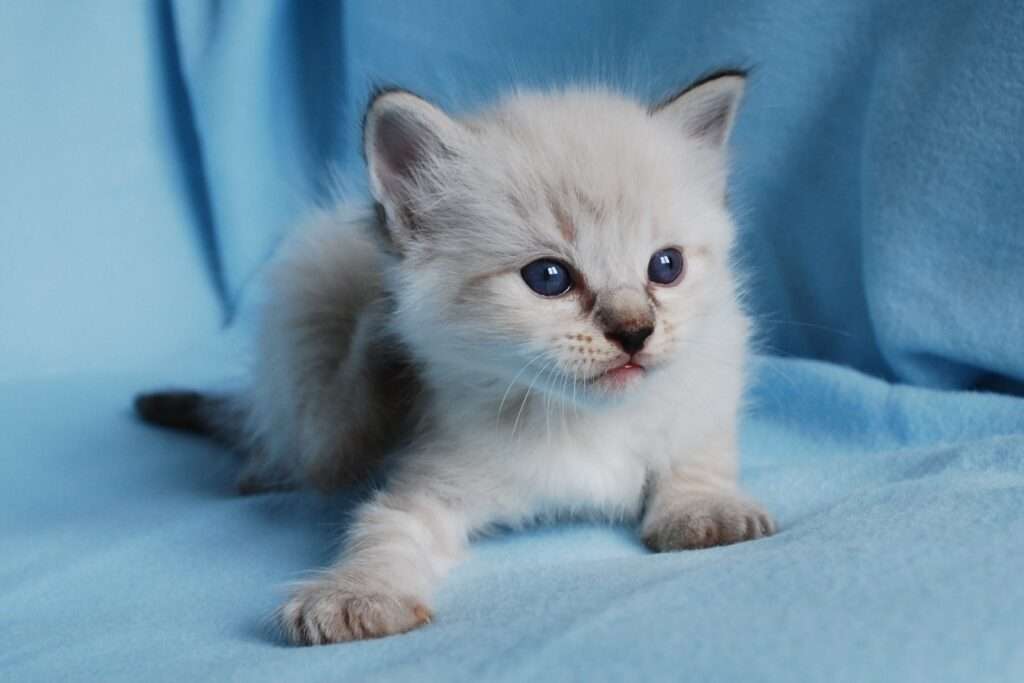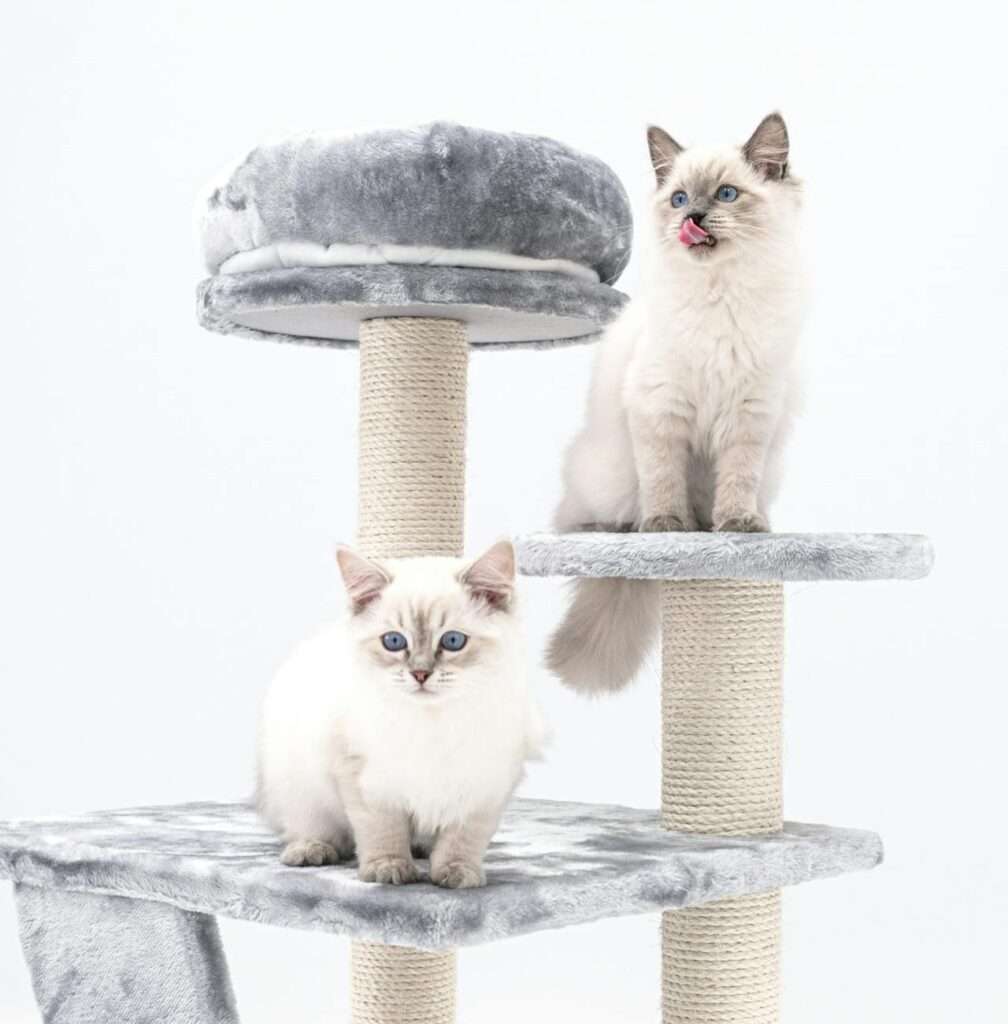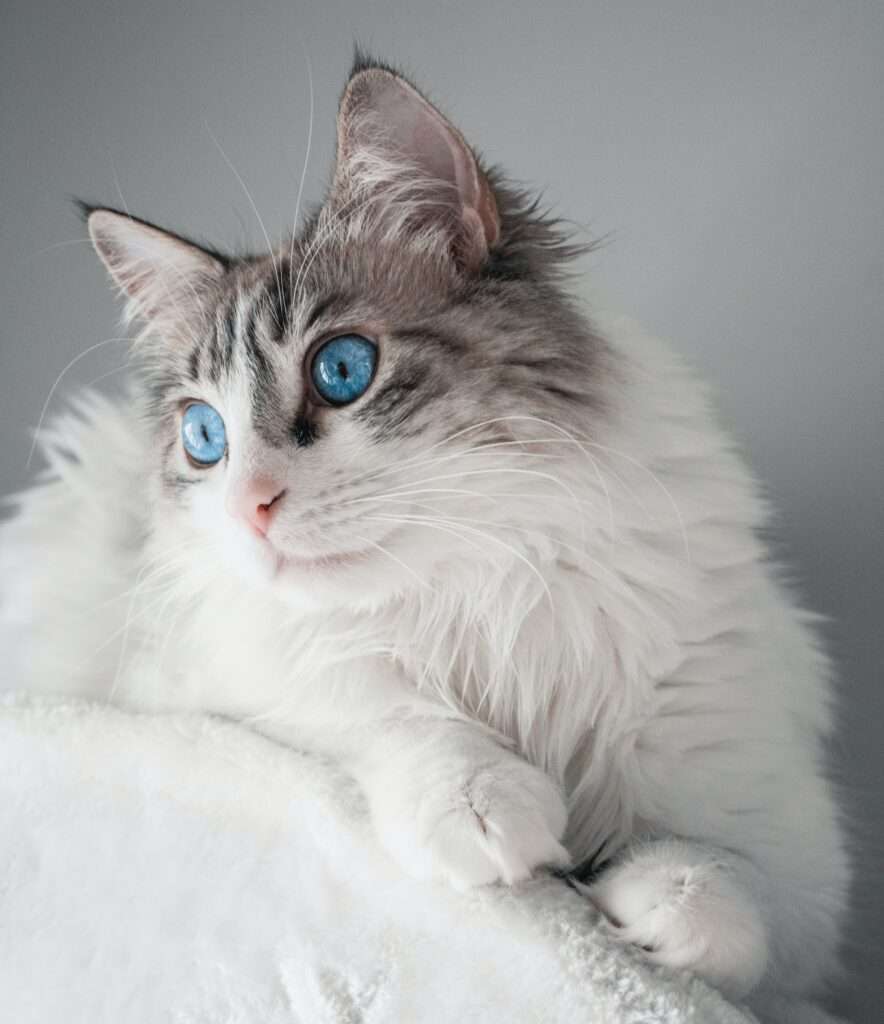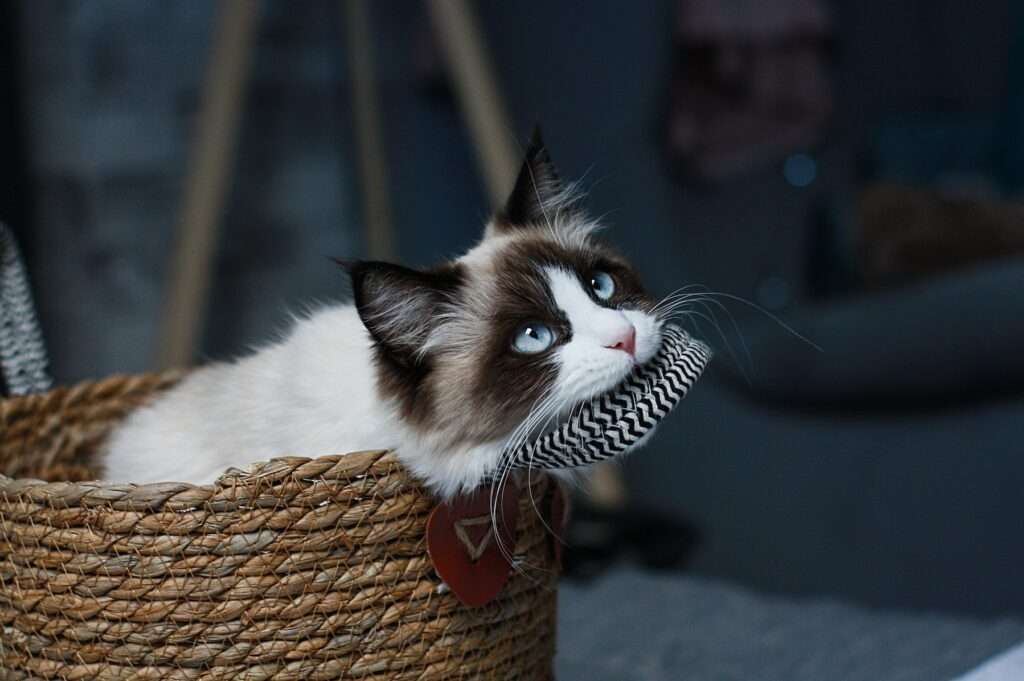27 Bad Things About Ragdolls: Is Their Charm Worth the Challenges?
So, you’ve fallen in love with those captivating blue eyes and enchanting, floppy demeanor of Ragdoll cats. You’re not alone; Ragdolls are renowned for their captivating charm and affectionate nature, making them a popular choice among cat enthusiasts. However, before you take the plunge into Ragdoll cat ownership, it’s crucial to understand that these feline companions, like all breeds, come with their own set of considerations and unique characteristics.
In this comprehensive guide, we’ll take you through 27 bad things about Ragdolls to keep in mind before welcoming one into your home. From shedding to health concerns, space requirements to exercise needs, we’ll explore the full spectrum of what it’s like to live with these magnificent felines. By the end of this article, you’ll be well-equipped to make an informed decision about whether a Ragdoll cat is the perfect addition to your family.
1. Shedding
Ragdoll cats are known for their luxurious, long fur, which undoubtedly adds to their charm. However, this lovely coat comes with a downside—shedding. Ragdolls are not low-shedding cats, and you’ll need to be prepared for a bit of extra vacuuming and lint-rolling in your life. Their fluffy fur can find its way onto your furniture, clothing, and just about everywhere else.
Tips for Managing Shedding: Regular brushing and grooming sessions can help mitigate the shedding. Invest in a high-quality cat brush to keep their coat in good condition and minimize loose hair. Consider covering your furniture with pet-friendly throws to make cleanup easier.
2. Grooming Requirements
Due to their long fur, Ragdoll cats require consistent grooming. Neglecting their grooming needs can lead to matting and hairballs, which could be uncomfortable for your feline friend and challenging for you to manage.
Grooming Tips: Establish a grooming routine early on, so your Ragdoll becomes accustomed to it. Brush their coat at least a few times a week to prevent tangles and matting. Regularly check their paws, ears, and tail for any debris or matting.
3. Allergies
While Ragdoll cats are known for their gentle and affectionate nature, some prospective owners may be concerned about allergies. Cat allergies are typically triggered by proteins found in a cat’s saliva, urine, and dander. Ragdolls can produce these allergens just like any other cat.
Managing Allergies: If you suspect you have cat allergies, it’s essential to spend time around Ragdoll cats before bringing one into your home. Consider allergy medications or allergy shots. Regular grooming and cleaning can also help reduce allergen levels in your environment.
4. Health Concerns
Ragdoll cats are generally healthy, but like any breed, they can be prone to specific health issues. Two of the most common health concerns in Ragdolls are hypertrophic cardiomyopathy (a heart condition) and polycystic kidney disease. Regular vet check-ups are essential to monitor and address any potential health issues.
Healthcare Tips: Stay vigilant with your Ragdoll’s health by scheduling annual vet check-ups and discussing any breed-specific health concerns with your veterinarian. Ensure that your cat receives a balanced diet and maintains a healthy weight, as this can contribute to overall well-being.
5. Cost

Ragdoll cats are not just an investment in companionship; they can also be a financial commitment. Initial purchase prices for Ragdoll kittens from reputable breeders can be relatively high, and ongoing expenses include grooming, healthcare, quality food, and accessories.
Budgeting Advice: Plan your budget carefully, considering both upfront and ongoing costs. It’s wise to have an emergency fund for unexpected vet bills. Research different breeders and rescue organizations to find the most suitable option for your budget.
6. Size
Ragdolls are known for their large size. These cats are bigger and heavier compared to many other breeds, which can be a significant factor to consider if you have limited living space.
Space Adaptation: Ensure that your living space can accommodate a large cat comfortably. Make room for cat trees, scratching posts, and cozy nooks to allow your Ragdoll to thrive in your home.
7. Clinginess
Ragdolls are famous for their affectionate nature, often seeking human companionship. While this is endearing for many owners, it might be considered overly clingy by some. Ragdolls love to be near their owners and might follow you from room to room.
Coping with Clinginess: Embrace the affection, and create a bond with your Ragdoll through regular interaction and cuddling. Ensure that your schedule allows for quality time with your feline friend.
8. Vocalization
Ragdoll cats can be quite talkative. They may meow to communicate their needs, greet you, or simply have a conversation. If you prefer a quieter environment, their vocal tendencies might take some getting used to.
Managing Vocalization: Engage in interactive playtime and provide toys to keep your Ragdoll entertained. Respond to their vocalizations to understand their needs, which can help reduce excessive meowing.
9. Socialization

While Ragdoll cats are known for their sweet nature, some may not get along well with other pets. It’s essential to consider your existing pet’s temperament and the potential for conflicts when introducing a Ragdoll into your household.
Successful Socialization: Take your time introducing new pets, allowing them to become accustomed to each other’s scents and presence. Always supervise initial interactions and be patient during the adjustment period.
10. Exercise Needs
Ragdolls, despite their relaxed demeanor, require regular exercise and playtime to stay happy and healthy. Their size and energy levels mean they need physical and mental stimulation.
Keeping Them Active: Provide a variety of toys, interactive play sessions, and cat trees for climbing. Regular playtime can help prevent obesity and keep your Ragdoll engaged.
11. Fragility
Ragdolls are known for their “ragdoll” behavior, which can make them less agile and potentially more prone to injuries. They might not land on their feet as gracefully as some other cat breeds.
Preventing Injuries: Create a safe environment by removing potential hazards. Ensure they have soft, cushioned landing spots for their playful antics.
12. Lifespan
Ragdoll cats typically have a longer lifespan, ranging from 12 to 15 years or more. This means adopting a Ragdoll is a significant, long-term commitment.
Long-Term Commitment: Be prepared for the commitment of caring for your Ragdoll throughout their life. Regular veterinary care and attention to their health are essential for a long and happy partnership.
13. Space Requirements

Ragdolls are not suited for small living spaces due to their size. They need room to roam, explore, and stretch their legs.
Accommodating Space: Ensure your home can accommodate a larger cat, and provide plenty of room for them to move around comfortably. Consider cat-friendly furniture and climbing structures.
14. Furniture Damage
Ragdolls have strong claws and love to play, which can lead to potential damage to your furniture.
Protecting Your Furniture: Invest in scratching posts and pads to redirect their scratching instincts. Train your Ragdoll to use these designated scratching areas to protect your furniture.
15. Temperamental Sensitivity
Ragdoll cats can be sensitive to changes in their environment and routine. They thrive in stable, predictable settings and might not handle disruptions well.
Maintaining Stability: Keep their environment as consistent as possible. Minimize changes to their daily routine and ensure a quiet, peaceful atmosphere to reduce stress.
16. Litter Box Odor
Ragdolls can produce significant odor in their litter boxes, which can be an issue in smaller living spaces.
Managing Odor: Regularly scoop and clean the litter box to minimize odor. Consider using odor-neutralizing litter and providing good ventilation in the area where the litter box is placed.
17. Seasonal Coat Changes

Ragdolls may experience heavier shedding during seasonal changes, especially in the spring and fall.
Dealing with Seasonal Shedding: Increase grooming during these seasons to help remove excess fur. Brush your Ragdoll more frequently to prevent matting.
18. Diet Requirements
Providing a balanced diet is crucial for the health and well-being of your Ragdoll cat. Their nutritional needs may differ from other breeds.
Choosing the Right Diet: Consult with your veterinarian to determine the best diet for your Ragdoll. High-quality cat food, possibly with specific recommendations, can help maintain their health.
19. Tailored Enrichment
Ragdolls benefit from both mental and physical stimulation. They can become bored without adequate enrichment.
Enrichment Activities: Invest in interactive toys, puzzles, and play sessions to keep your Ragdoll engaged. Rotate their toys to prevent boredom.
20. Travel Challenges
Traveling with Ragdolls can be more complicated due to their size and grooming needs.
Travel Planning: If you need to travel, plan for a reliable pet-sitter or boarding facility that understands Ragdoll-specific requirements. Prepare your cat for travel by acclimating them to carriers and car rides.
21. Limited Breeders

Finding a reputable Ragdoll breeder can be challenging, as the breed is relatively exclusive. Due to their popularity, you might encounter waiting lists and high demand for kittens.
Finding a Responsible Breeder: Do your research, check breeder reviews, and visit the cattery in person if possible. Ensure the breeder follows ethical breeding practices and provides a healthy, happy environment for their cats.
22. Time Commitment
Ragdoll cats require time and attention. Their affectionate nature thrives on interaction and companionship.
Investing Time: Be prepared to spend quality time with your Ragdoll. Engage in play, cuddles, and socialization to keep them happy and content.
23. Potential Aggression
While Ragdolls are known for their gentle nature, some individuals may exhibit territorial or aggressive behavior.
Handling Aggression: Work with a professional trainer or behaviorist if aggression becomes a concern. Ensure your Ragdoll feels safe and secure in their environment.
24. Space Dominance
Ragdolls may demand personal space within the home, especially if there are other pets.
Respect Their Space: Provide separate areas for your Ragdoll to retreat to if they need some alone time. Ensure that all pets in your household have their own space as well.
25. Needy Behavior

Ragdolls can be exceptionally affectionate and may need more attention than other breeds.
Balancing Affection and Independence: Embrace their loving nature but also encourage independence. Offer a cozy spot where they can relax when they’re not seeking your attention.
26. Potential Behavior Changes
If not properly socialized, Ragdolls might develop behavioral issues, such as anxiety or aggression.
Prioritizing Socialization: Make socialization a priority from a young age, ensuring your Ragdoll is exposed to various experiences, people, and pets to promote a well-adjusted personality.
27. Adoption and Rescue Availability
While Ragdolls are popular, finding them through adoption or rescue organizations can be limited.
Exploring Adoption Options: If you’re committed to adopting, be patient and proactive. Check local shelters and dedicated Ragdoll rescue organizations. Be prepared for potential waiting lists.
Conclusion
Congratulations! You’ve now explored 27 essential considerations before bringing a Ragdoll cat into your life. These stunning, affectionate felines can be incredibly rewarding companions when you’re well-prepared for their unique characteristics and potential challenges.
With this comprehensive guide, you’re equipped to make an informed decision and ensure a harmonious partnership with your Ragdoll cat. May your future with your feline friend be filled with love, joy, and endless purrs.
Frequently Asked Questions
Are Ragdoll cats good for families with children and other pets?
Ragdoll cats are known for their gentle and affectionate nature, making them generally well-suited for families with children and other pets. However, it’s crucial to supervise interactions, especially in the beginning, to ensure that everyone gets along safely. Proper socialization from a young age can help Ragdolls adapt well to various household members.
Do Ragdoll cats need a specific diet?
While there is no specific diet exclusively for Ragdoll cats, it’s essential to provide them with high-quality cat food that meets their nutritional needs. Consult with your veterinarian for recommendations based on your cat’s age, activity level, and health.
How can I find a reputable Ragdoll breeder?
Finding a reputable Ragdoll breeder can be challenging due to the breed’s popularity. Start by researching online, reading reviews, and asking for recommendations from cat enthusiasts or local cat clubs. Be sure to visit the cattery in person, ask questions about their breeding practices, and meet the cats. Reputable breeders prioritize the health and well-being of their cats.
Can Ragdoll cats be left alone during the day?
Ragdoll cats, like all cats, can be left alone during the day. However, they do enjoy companionship and play, so providing toys and interactive entertainment can keep them content in your absence. Consider having a second pet or a pet-sitter if you anticipate long periods away from home.
How do I address excessive shedding in Ragdoll cats?
To address excessive shedding, establish a regular grooming routine. Brush your Ragdoll’s coat at least a few times a week to prevent matting and remove loose fur. High-quality brushes and combs designed for long-haired cats work best. In addition, provide a well-balanced diet to promote a healthy coat.
What’s the average lifespan of a Ragdoll cat?
Ragdoll cats typically have an average lifespan of 12 to 15 years or more when well cared for. Regular vet check-ups, a balanced diet, and a loving environment can contribute to a longer, healthier life for your Ragdoll.
How can I manage a Ragdoll cat’s clingy behavior?
Ragdoll cats can be quite affectionate and clingy. Embrace their love and provide attention, but also encourage independence by offering a quiet space where they can relax on their own when needed. Play and socialize with them regularly to meet their need for interaction.
Are Ragdoll cats good for apartment living?
While Ragdoll cats are relatively large, they can adapt well to apartment living if provided with enough space and enrichment. Make sure to offer them places to climb, toys for mental stimulation, and a comfortable spot by the window to watch the world outside.
Can I adopt a Ragdoll cat from a rescue organization?
Yes, you can adopt a Ragdoll cat from rescue organizations or shelters. Although it may be more challenging to find them in rescue settings due to their popularity, dedicated Ragdoll rescue organizations do exist. Be prepared for potential waiting lists and be patient during the process.
How can I minimize potential aggression in a Ragdoll cat?
Minimize potential aggression by providing a safe and comfortable environment, conducting proper socialization from a young age, and consulting a professional behaviorist if needed. Understanding and addressing the root causes of aggression can help create a harmonious atmosphere in your home.





